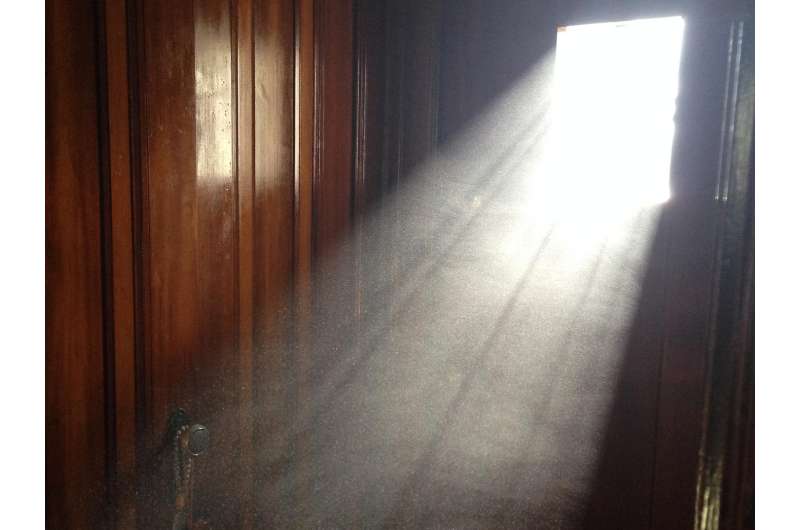Letting the sunshine in may kill dust-dwelling bacteria

Allowing sunlight in through windows can kill bacteria that live in dust, according to a study published in the open access journal Microbiome.
Researchers at the University of Oregon found that in dark rooms 12% of bacteria on average were alive and able to reproduce (viable). In comparison only 6.8% of bacteria exposed to daylight and 6.1% of bacteria exposed to UV light were viable.
Dr. Fahimipour said: "Humans spend most of their time indoors, where exposure to dust particles that carry a variety of bacteria, including pathogens that can make us sick, is unavoidable. Therefore, it is important to understand how features of the buildings we occupy influence dust ecosystems and how this could affect our health."
Dust kept in the dark contained organisms closely related to species associated with respiratory diseases, which were largely absent in dust exposed to daylight.
The authors found that a smaller proportion of human skin-derived bacteria and a larger proportion of outdoor air-derived bacteria lived in dust exposed to light that in than in dust not exposed to light. This may suggest that daylight causes the microbiome of indoor dust to more strongly resemble bacterial communities found outdoors.
The researchers made eleven identical climate-controlled miniature rooms that mimicked real buildings and seeded them with dust collected in residential homes. The authors applied one of three glazing treatments to the windows of the rooms, so that they transmitted visible, ultraviolet or no light. After 90 days, the authors collected dust from each environment and analysed the composition, abundance, and viability of the bacteria present.
Dr. Fahimipour said: "Our study supports a century-old folk wisdom, that daylight has the potential to kill microbes on dust particles, but we need more research to understand the underlying causes of shifts in the dust microbiome following light exposure. We hope that with further understanding, we could design access to daylight in buildings such as schools, offices, hospitals and homes in ways that reduce the risk of dust-borne infections."
The authors caution that the miniature room environments used in the study were exposed to only a relatively narrow range of light dosages. Although the researchers selected light dosages similar to those found in most buildings, there are many architectural and geographical features that produce lower or higher dosages of light that may need additional study.
More information: Ashkaan K. Fahimipour et al, Daylight exposure modulates bacterial communities associated with household dust, Microbiome (2018). DOI: 10.1186/s40168-018-0559-4
Provided by BioMed Central


















